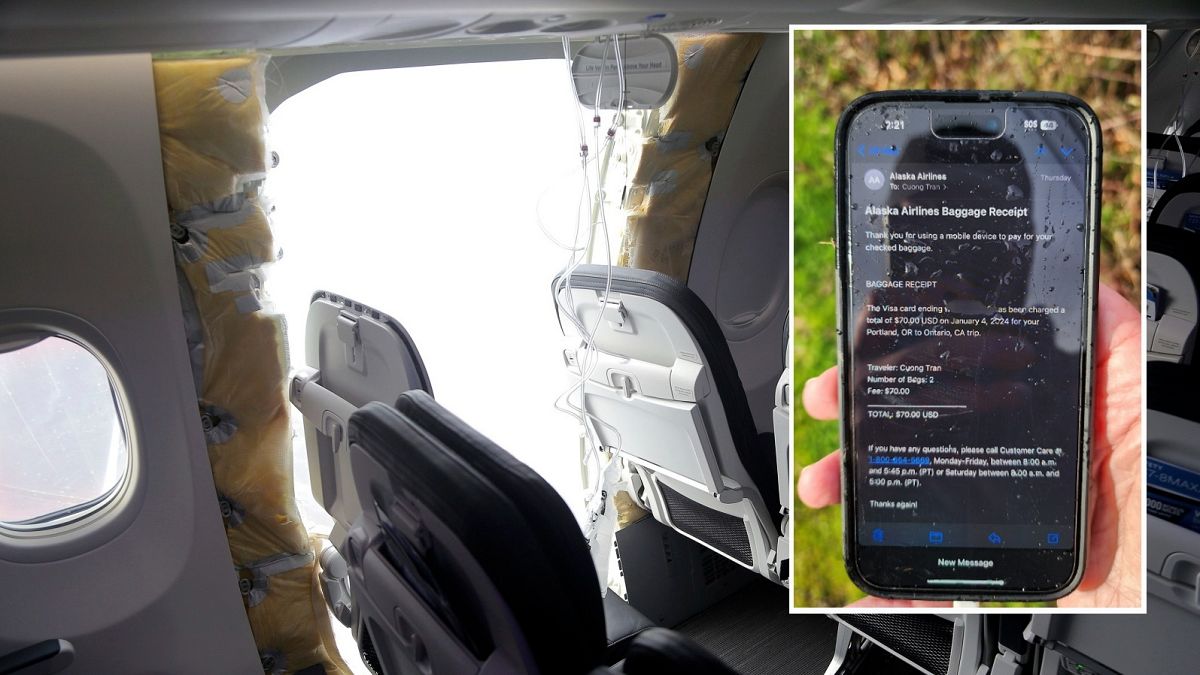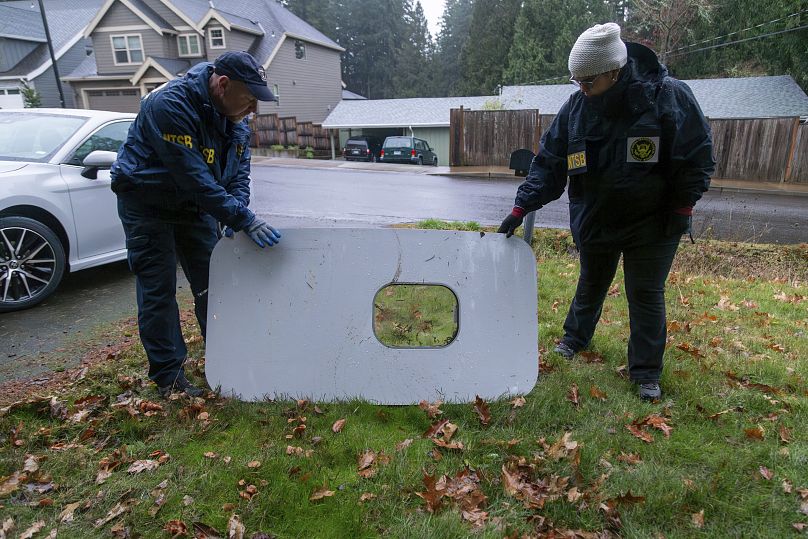A social media user posted a photo of an iPhone that appeared to fall from an Alaska Airlines flight after part of the fuselage broke away from the plane. A space scientist explains why it stayed intact.
Some of the items that fell more than 4,500 m from a hole in a Boeing aircraft last week appeared to be intact when found on the ground.
The Alaska Airlines flight had depressurised minutes after taking off as a door plug, one part of the fuselage, detached from the plane.
The aircraft landed shortly afterwards in Portland, Oregon in the US, with none of the passengers or crew seriously injured.
Since then, the door plug, a section of the plane covering an optional emergency exit, was found intact in the backyard of a house in Oregon.
A man also posted a photo of an iPhone found on the side of the road that was still in aeroplane mode and was open to a baggage claim receipt for the flight in question.
"When I called it in, Zoe at the NTSB said it was the SECOND phone to be found," Sean Bates wrote in a post on social media platform X.
In a statement to Euronews Next, the US National Transportation Safety Board (NTSB) confirmed that two cell phones had indeed been found on the ground following the incident.
"Two cell phones likely from the flight have been recovered. They have been turned over to Alaska Airlines. They were both functioning iPhones," a spokesperson for the NTSB said.
How could these items fall thousands of metres and remain intact?
Simon Foster, a space scientist at Imperial College London, told Euronews Next that while lucky, the reason that items falling thousands of metres could remain intact is related to terminal velocity and momentum.
If an object is dropped from a plane, for instance, gravity will pull the item down, but air resistance will push it in the other direction.
"The faster I go, eventually the pull of gravity will equal the push back from the air, the air resistance. At which point I can’t speed up anymore. That’s called terminal velocity," Foster said.
It depends on the item’s area and shape, he said. When a person goes skydiving, for instance, they open a parachute, which increases the area. This means they push against more air and slow down.
Both an iPhone and the door plug are in the shape of a rectangle, and depending on how they fall, could push back a lot of air. Foster roughly estimated based on a cell phone’s size that it would only take about 12 seconds for it to reach about 45 km per hour.
The next thing that matters in terms of these items staying intact is how they land and if the landing is slowed down over time.
"If you could make the crash last longer… peculiarly the force on your body is a lot less," he said. "So the time over which your deceleration occurs radically alters the force you feel".
For instance, the force on your body going from 100 kph to 0 kph over 30 seconds would be much less than if it happened in a car accident in half a second, physics shows us. Airbags are designed exactly for this reason.
"You hit that airbag and it slows you down. You’re still moving forward, but the time before you hit your head on the steering wheel has taken a lot longer. Bizarrely, that reduces the force a whole lot," said Foster, who used to teach high school physics as well.
If the iPhone or door plug fell through trees, this would have slowed them down gradually, reducing the force applied to them when they hit the ground.
British flight sergeant Nicolas Alkemade is one example of someone who fell 5,490 metres from a burning aircraft during World War II and walked away without any broken bones. He had landed in a snowy pine wood that likely slowed down his fall.
For the plane’s door plug, which the NTSB pictured intact on social media, the trees likely slowed the descent, Foster said.
"I wouldn't want it falling on my head and wouldn't want an iPhone falling on my head, but, in comparison to, say, a bullet, it’s not travelling that fast," he added.
But these items still could have done serious damage if they had hit someone on the ground, he added, saying it’s lucky no one was hurt.




